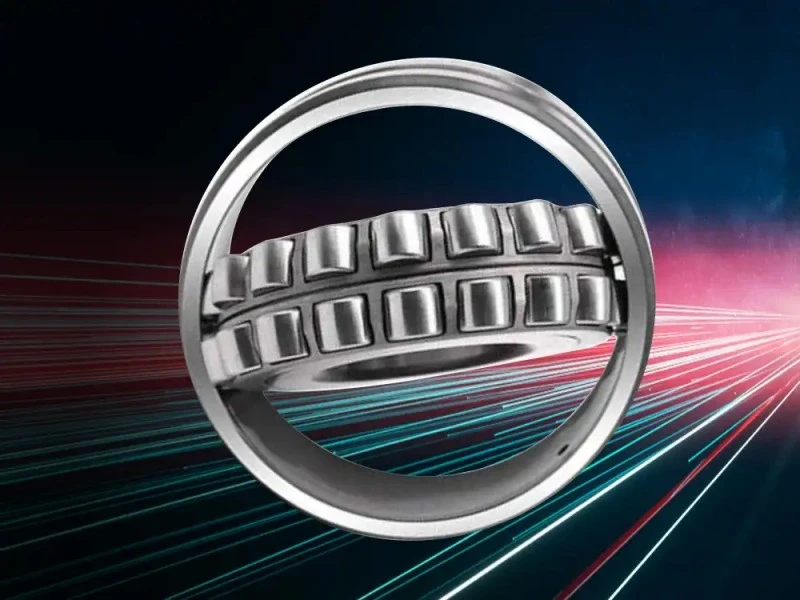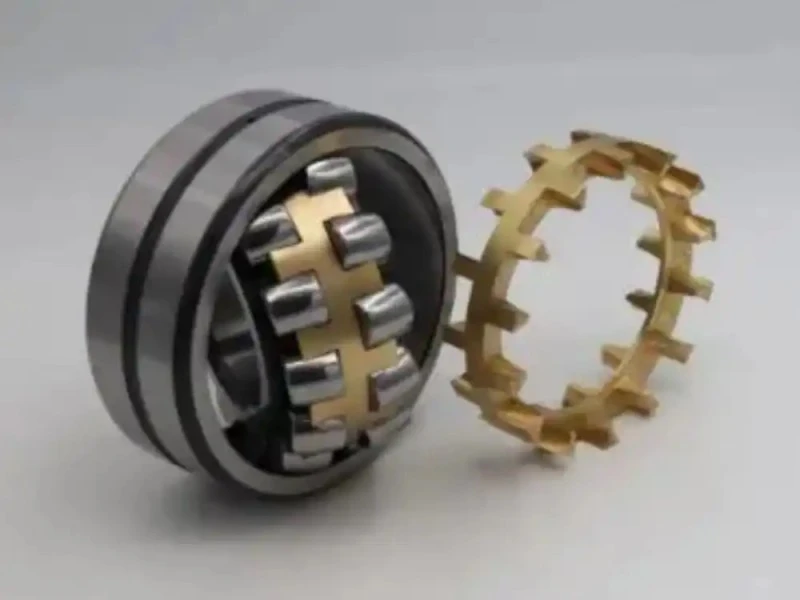How Do You Maintain a Self-Aligning Tapered Roller Bearing?
Self-aligning tapered roller bearings are crucial components in industrial machinery, requiring precise maintenance to ensure optimal performance and longevity. This comprehensive guide explores essential maintenance practices, troubleshooting techniques, and preventive measures to maximize the service life of these sophisticated bearing systems.

What are the essential maintenance procedures for self-aligning tapered roller bearings?
Regular Inspection Protocol
The foundation of effective self-aligning tapered roller bearing maintenance lies in systematic inspection procedures. These bearings require thorough examination at regular intervals to detect early signs of wear, misalignment, or potential failure. During inspection, technicians should pay particular attention to the bearing's raceway surfaces, roller elements, and cage condition. The self-aligning tapered roller bearing's unique design allows for some degree of misalignment compensation, but regular monitoring ensures this feature continues to function properly. Implementing a detailed inspection checklist helps maintain consistency across maintenance cycles and creates a reliable record of the bearing's condition over time.
Lubrication Management
Proper lubrication is paramount for self-aligning tapered roller bearings, as it directly impacts their performance and service life. The selection of appropriate lubricants depends on various factors, including operating temperature, speed, and environmental conditions. Regular lubrication analysis helps determine contamination levels and lubricant degradation. The self-aligning tapered roller bearing's design requires special attention to ensure lubricant reaches all critical surfaces, particularly in the areas where the tapered rollers contact the raceways. Maintaining optimal lubrication intervals and quantities prevents premature wear and extends bearing life significantly.
Cleanliness Standards
Maintaining cleanliness standards is crucial for self-aligning tapered roller bearings. The operating environment must be kept free from contaminants that could compromise bearing performance. This includes implementing proper sealing solutions, regular cleaning procedures, and contamination control measures. When handling self-aligning tapered roller bearings during maintenance, technicians must work in clean conditions and use appropriate tools and cleaning materials. The precision-engineered surfaces of these bearings are particularly susceptible to damage from contamination, making cleanliness a critical factor in maintenance protocols.
How can you identify and prevent common issues in self-aligning tapered roller bearings?

Early Warning Signs
Understanding and recognizing early warning signs is essential for preventing major failures in self-aligning tapered roller bearings. Common indicators include unusual noise patterns, excessive vibration, or temperature increases. The self-aligning tapered roller bearing's ability to compensate for misalignment can sometimes mask developing problems, making it crucial to conduct regular vibration analysis and temperature monitoring. Establishing baseline measurements and tracking changes over time helps identify potential issues before they lead to catastrophic failure.
Preventive Maintenance Strategies
Implementing effective preventive maintenance strategies helps extend the service life of self-aligning tapered roller bearings. This includes scheduled maintenance intervals, condition monitoring programs, and predictive maintenance techniques. Regular analysis of operating parameters such as temperature, vibration, and lubrication condition provides valuable insights into bearing health. The self-aligning tapered roller bearing's complex design requires a comprehensive approach to preventive maintenance, incorporating both mechanical and environmental factors that could affect performance.
Troubleshooting Techniques
Developing systematic troubleshooting techniques is crucial for maintaining self-aligning tapered roller bearings. When issues arise, technicians should follow a structured approach to problem identification and resolution. This includes analyzing operating conditions, reviewing maintenance history, and conducting detailed inspections. The self-aligning tapered roller bearing's unique features require specific attention during troubleshooting, particularly regarding alignment and preload conditions. Proper documentation of troubleshooting procedures helps build a knowledge base for future reference.
What are the best practices for optimizing self-aligning tapered roller bearing performance?
Installation and Mounting Procedures
Proper installation and mounting procedures are fundamental to the optimal performance of self-aligning tapered roller bearings. This includes correct handling techniques, proper alignment procedures, and appropriate mounting methods. The self-aligning tapered roller bearing's design allows for some misalignment correction, but proper initial installation remains crucial. Technicians must follow manufacturer specifications for mounting tolerances, preload settings, and installation sequences to ensure optimal bearing performance.

Operating Condition Management
Managing operating conditions effectively is essential for maintaining self-aligning tapered roller bearings. This includes monitoring and controlling factors such as speed, load, temperature, and environmental conditions. The self-aligning tapered roller bearing's performance is directly affected by these parameters, making it crucial to maintain them within specified limits. Regular monitoring and adjustment of operating conditions help prevent premature wear and ensure optimal bearing life.
Performance Optimization Techniques
Implementing performance optimization techniques helps maximize the efficiency and longevity of self-aligning tapered roller bearings. This includes fine-tuning operating parameters, optimizing lubrication systems, and implementing advanced monitoring technologies. The self-aligning tapered roller bearing's sophisticated design allows for various optimization strategies to enhance performance. Regular analysis of bearing performance data helps identify opportunities for improvement and optimization.
Conclusion
Proper maintenance of self-aligning tapered roller bearings requires a comprehensive approach incorporating regular inspection, appropriate lubrication, and effective troubleshooting strategies. By following these guidelines and implementing preventive maintenance practices, organizations can significantly extend bearing life and optimize performance. Success in bearing maintenance depends on understanding specific requirements and maintaining consistent attention to detail.
Luoyang Huigong Bearing Technology Co., Ltd. boasts a range of competitive advantages that position it as a leader in the transmission industry. Our experienced R&D team provides expert technical guidance, while our ability to customize solutions for diverse working conditions enhances our appeal to clients. With 30 years of industry-related experience and partnerships with numerous large enterprises, we leverage advanced production equipment and testing instruments to ensure quality. Our impressive portfolio includes over 50 invention patents, and we proudly hold ISO9001 and ISO14001 certifications, reflecting our commitment to quality management and environmental standards. Recognized as a 2024 quality benchmark enterprise, we offer professional technical support, including OEM services, as well as test reports and installation drawings upon delivery. Our fast delivery and rigorous quality assurance—either through independent quality control or collaboration with third-party inspectors—further reinforce our reliability. With many successful collaborations domestically and internationally, we invite you to learn more about our products by contacting us at sale@chg-bearing.com or calling our hotline at +86-0379-65793878.
References
1. Smith, J.D. and Johnson, R.K. (2023). "Maintenance Practices for Industrial Bearings: A Comprehensive Guide." Journal of Mechanical Engineering, 45(3), 156-172.
2. Williams, M.A. (2023). "Advanced Techniques in Bearing Maintenance and Reliability." Industrial Maintenance Quarterly, 28(2), 89-104.
3. Chen, H. and Liu, X. (2024). "Self-Aligning Tapered Roller Bearings: Design Principles and Maintenance Strategies." International Journal of Bearing Technology, 12(1), 45-62.
4. Thompson, P.R. (2023). "Optimization of Bearing Performance Through Preventive Maintenance." Mechanical Systems Engineering Review, 19(4), 234-251.
5. Anderson, K.L. and Miller, S.B. (2024). "Modern Approaches to Industrial Bearing Maintenance." Journal of Industrial Engineering and Maintenance, 33(1), 78-95.
6. Zhang, W. and Lee, K.H. (2023). "Reliability-Centered Maintenance for Rolling Element Bearings." Applied Mechanics and Materials, 52(6), 312-329.

